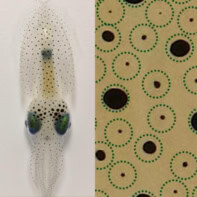
A wearable supercapacitor that stores energy using human sweat has been developed and demonstrated in the UK by Ravinder Dahiya and colleagues at the University of Glasgow’s Bendable Electronics and Sensing Technologies Group. The team created the device by depositing a specialized polymer onto a highly absorbent cloth. Their design addresses many of the problems facing designers of flexible energy storage systems and could lead to a diverse range of new technological applications.
Creating wearable electronic technologies poses a unique set of challenges. Researchers must ensure that a high density of self-powered devices including sensors, displays, and circuits can be seamlessly integrated into flexible, durable, and comfortable materials. This is extremely difficult to do with conventional batteries, which are inflexible, prone to overheating, and rely on toxic, environmentally unfriendly electrolytes that could harm a wearer.
To address these issues Dahiya and colleagues have made a high-performance supercapacitor from easily wearable materials that used the wearer’s sweat as a biocompatible electrolyte. Like a rechargeable battery, a supercapacitor stores and releases electrical energy.
Sweat trap
The system traps sweat in highly absorbent cloth made from mixed fibres of polyester and cellulose. Each side of the cloth is coated with thin layers of the polymer PEDOT:PSS, which were doped with impurities to improve their conductivity. A solar cell provides the electrical input that causes positive and negative ions contained in sweat to be absorbed and diffused into the surfaces of each oppositely charged polymer coating – thereby storing electrical energy
Dahiya’s team tested the performance of their supercapacitor by asking volunteers to run while wearing the device as a small patch attached to their clothes. They found that the device became fully charged with just 20 μl of sweat, and generated 10 mW of power until the running stopped. This sufficient to operate a small bank of LEDs.
Bendy and washable
They showed that the device continued to work while subject to different amounts of bending. It operated after 4000 cycles of charging and discharging and did not deteriorate during washing.

Wearable patches could ‘decode’ sweat
The researchers also used their supercapacitor to power a cloth-based sensor of runners’ sweat salinity – offering a safe and sustainable route towards meeting the power requirements of such a system.
Since polymers bond well with textiles, Dahiya’s team envisions a wide range of applications for their device, from patient monitoring and self-health management, to improving energy efficiency in homes. They now hope to explore how sweat power could be integrated into other rapidly developing technologies including the Internet of things, augmented and virtual Reality, and robotics; potentially allowing for a better degree of connectedness between humans and technology.
The device is described in Advanced Materials.



